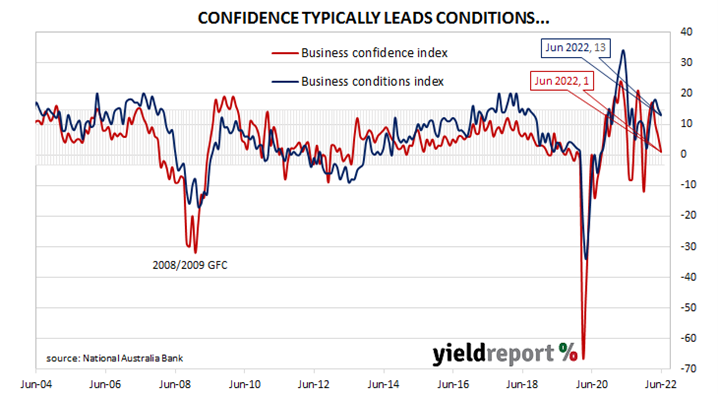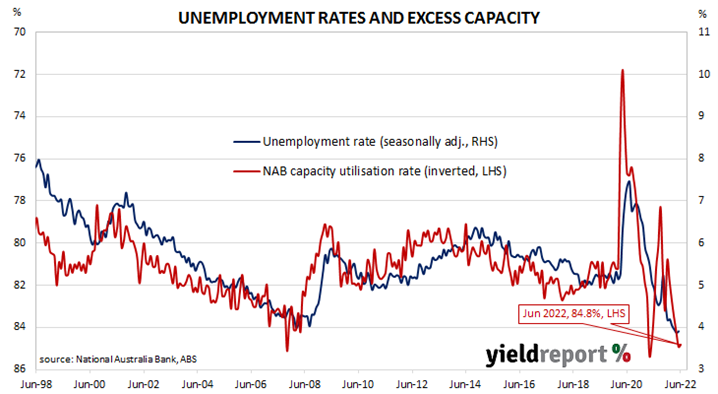Summary: Business conditions deteriorate in June, still at elevated level; strong across states, most industries; confidence also deteriorates, below long-term average; due to global uncertainty, looming interest rate hikes, inflation; capacity utilisation rate slips, all 8 sectors of economy above respective long-run averages.
NAB’s business survey indicated Australian business conditions were robust in the first half of 2018, with a cyclical-peak reached in April of that year. Readings from NAB’s index then began to slip and forecasts of a slowdown in the domestic economy began to emerge in the first half of 2019 as the index trended lower. It hit a nadir in April 2020 as pandemic restrictions were introduced but then conditions improved markedly over the next twelve months. Readings have been generally in a historically-normal range since then.
According to NAB’s latest monthly business survey of over 400 firms conducted over the last week and a half of June, business conditions have deteriorated slightly again, albeit to a level which is still elevated. NAB’s conditions index registered 13, down from May’s reading of 15.
“Conditions have remained strong across the states and across most industries, including retail,” said NAB senior economist Brody Viney. However, he noted “soft conditions” in the construction sector “as building costs continue to rise, squeezing profits despite a large ongoing pipeline of work in the sector.”
Business confidence also deteriorated but the change was larger. NAB’s confidence index fell from May’s reading of 6 to 1, a reading which is below the long-term average. Typically, NAB’s confidence index leads the conditions index by one month, although some divergences have appeared from time to time.
Viney put the fall in confidence down to “global uncertainty, looming interest rate hikes and inflation”, especially in the retail sector where confidence took “a significant hit.”
Commonwealth Government bond yields moved higher on the day. By the close of business, the 3-year ACGB yield had gained 5bps to 3.16%, the 10-year yield had added 2bps to 3.53% while the 20-year yield finished 5bps higher at 3.77%.
NAB’s measure of national capacity utilisation paused its recovery from December’s drop and it declined from May’s revised figure of 84.9% to 84.8%. All eight sectors of the economy were reported to be operating above their respective long-run averages.
Capacity utilisation is generally accepted as an indicator of future investment expenditure and it also has a strong inverse relationship with the unemployment rate.



